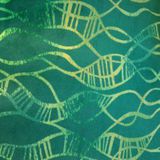


Value of face to determine the disease (part 1)
1. Bird facies (Pierre Robin Malformation) Small lower jaw, a slit like hole in the palate of mouth (called cleft palate) and the tongue appear to fall into the throat (condition called as retroglossoptosis). 2. Chipmunk facies ( Untreated β Thalassemia major, Bullimia nervosa, Parotid swelling) Expanded globular maxillae, with BM hyperexpansion into facial bones, combined with prominent epicanthal folds. 3. Leonine facies (Lepromatous Leprosy) Peculiar, deeply furrowed, lionlike appearance of the face. 4. Adenoid facies (Adenoid hypertrophy) Long, open-mouthed, dumb-looking face of children. 5. Torpid or Myxedematous facies (Myxedema) Skin generally thickened, alopecia, periorbital oedema, xanthelasma, coolness and dryness of skin and hair, thinning of scalp hair, tongue swelling. 6. Mask like or Parkinsonian facies (Parkinsonism) Mask-like, tremor of head, absence of blinking, dribbling of saliva, weakness of upward gaze, vacant look, seborrhoea and sweatiness. 7. Acromegalic facies (Acromegaly) Large supraorbital ridge and frontal bossing, thickened lips, enlarge tongue, lower jaw firm and square (protruding jaw = prognathism). 8. Cushingoid facies (Cushing syndrome) A rounded face with a double chin, prominent flushed cheeks, and fat deposits in the temporal fossa and cheeks. 9. Gargoyle facies (Hurler syndrome) Head is large and dolichocephalic, with frontal bossing and prominent sagittal and metopic sutures, with mid-face hypoplasia, depressed nasal bridge, flared nares, and a prominent lower 1⁄3 of face, thickened facies, widely spaced teeth and attenuated dental enamel, gingival hyperplasia.
Thanks a lot for this compilation. As a student I haven't seen most of these conditions, but only read about them. Do make more such posts!
I’ve been living with Parkinson’s disease for quite some time, and for years, I struggled to find lasting relief. While medications offered some temporary help, the symptoms always returned and often worsened.Out of a mix of hope and hesitation, I decided to try an herbal treatment program from NaturePath Herbal Clinic. I’ll admit, I was skeptical at first. But around the fourth month, I began to notice real, steady progress.my tremors became less frequent the stiffness in my body eased My balance and coordination gradually improved It wasn’t an overnight transformation, but it was consistent and life changing. For the first time in years, I feel more in control of my body. I can move with greater freedom, sleep more peacefully, and enjoy daily activities without the constant discomfort I once accepted as normal.The improvement I’ve experienced physically, emotionally, and mentally has been nothing short of upliftings.If you're exploring natural options for managing Parkinson’s, I wholeheartedly recommend looking into NaturePath Herbal Clinic. Their approach has made a real difference in my life, and I’m truly grateful I gave it a chance. www.naturepathherbalclinic.com info@naturepathherbalclinic.com



